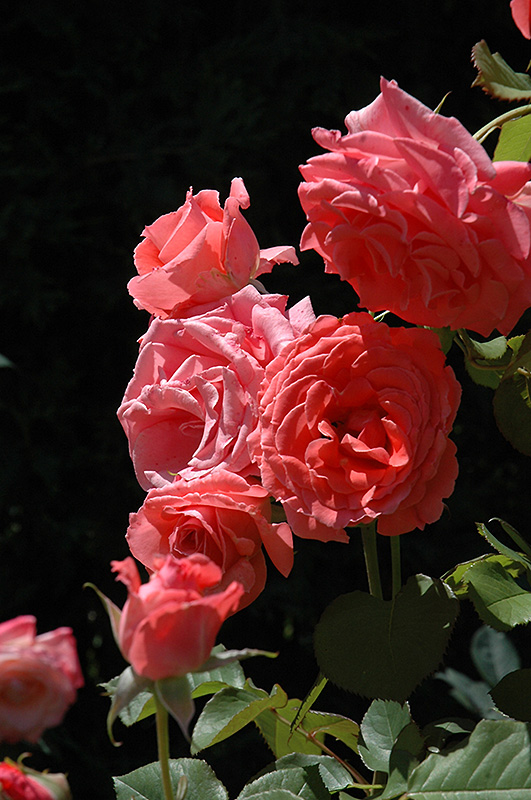NETPS
Climbing America Rose
Rosa 'Climbing America'
Height: 15 feet
Spread: 24 inches
Sunlight:
![]()
![]()
Hardiness Zone: 4
Group/Class: Climbing Rose
Description:
This fast growing, vigorous plant bears an abundance of fully double coral-pink blooms throughout the season; heavily fragrant with the spicy scent of cloves; a stunning addition to the garden; blooms on old and new wood
Ornamental Features
Climbing America Rose features showy clusters of fragrant fully double coral-pink flowers with pink overtones along the branches from mid spring to early fall. The flowers are excellent for cutting. It has dark green deciduous foliage. The glossy oval compound leaves do not develop any appreciable fall color.
Landscape Attributes
Climbing America Rose is a multi-stemmed deciduous woody vine with a twining and trailing habit of growth. Its average texture blends into the landscape, but can be balanced by one or two finer or coarser trees or shrubs for an effective composition.
This is a high maintenance woody vine that will require regular care and upkeep, and is best pruned in late winter once the threat of extreme cold has passed. It is a good choice for attracting bees to your yard. It has no significant negative characteristics.
Climbing America Rose is recommended for the following landscape applications;
- Mass Planting
- Hedges/Screening
- General Garden Use
Planting & Growing
Climbing America Rose will grow to be about 15 feet tall at maturity, with a spread of 24 inches. As a climbing rose, it can be leggy near the base and may be concealed by underplanting with lower-growing facer plants. It should be planted near a fence, trellis or other landscape structure where it can be trained to grow upwards on it, or allowed to trail off a retaining wall or slope. It grows at a fast rate, and under ideal conditions can be expected to live for approximately 30 years.
This woody vine does best in full sun to partial shade. It does best in average to evenly moist conditions, but will not tolerate standing water. It is not particular as to soil type or pH. It is highly tolerant of urban pollution and will even thrive in inner city environments. This particular variety is an interspecific hybrid.
A NetPS Plant Finder tool
